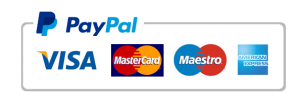Strategic environmental analysis system
Strategic environmental analysis system
This is an assignment that focuses on the creation of a strategic environmental analysis system. The paper requires consideration of the essential analysis frameworks.
The creation of a strategic environmental analysis system
Individual Assignment:
Assignment Question:
Firstly, you have been asked as a consultant to assist a client in the creation of a strategic environmental analysis system. Secondly, what do you consider to be the essential analysis frameworks in the external and organizational environments? And why? Critically discuss the elements of each framework.
Notes:
Consequently, please focus on the assignment, answering all parts and use theory selectively to support your arguments. You may also quote from industry/company/financial press sources. Please also make sure your referencing of all sources is to an established convention and standard. If in doubt use “Harvard” referencing. You need to consult with at least 15 academic references to develop your argument.
Marking criteria Knowledge of the subject area, including academic debates and any recent or
anticipated developments
Structure of answer, including the coherent development of arguments and the use of an introduction and conclusion
Focus on the question asked, including the ability to determine what is relevant and the omission of superfluous information/material
Also, use of appropriate sources, including journal articles, books and authoritative reports
Originality of interpretation, including depths of analysis and the ability to present arguments based on sound reasoning
Standard of presentation, including the use of language and grammar, layout of the text, footnote referencing, bibliography and adherence to the stipulated word limit
Submission and writing guidelines
Ensure that the paper is at least four pages long using the Times New Roman font style. Additionally, the paper should be double spaced using font size 12. Ensure you add all the references in a different page from the rest of the assignment.

